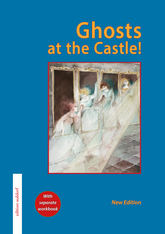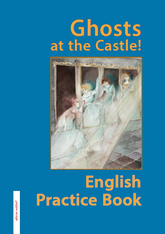This practice book accompanies the new reader “Outlaw: Robin of Sherwood” with a wide-ranging and extensive selection of exercises keyed to the text of the reader. Recommended for class 6.
Robin Hood is everybody’s hero. In the story the famous outlaw comes to life in an all-new retelling, completely rewritten for a fast, easy read. The reader has black-and-white illustrations by Christiane Lesch and an extensive page by page vocabulary. This practice book can be used with the reader alone. But for more support, it also references a short and simple English grammar for the Middle School, “English Grammar — An Introduction “ (Peter Morris, Engelberg 2013), available separately.
Why practice books?
For twenty years, many ‘Edition Waldorf’ readers have come with exercises included.
Why change to practice books now?
Here are some thoughts on practice books as a natural next step.
Similar to the familiar ‘Reader Exercises’ in their concept
- The practice books are wide-ranging collections of material.
- Here the teacher is in command, not the author’s programme.
- A real and extensive choice lets you find just what best suits a particular class.
- So these practice books are NOT ‘one size fits all’
- Different classes can work with completely different selections from the things on offer.
But practice books bring more space, more material and more variety.
All the grammar the class needs is now included
- This grammar is not just ‘new material’.
- Basics and revision exercises mean that colleagues have material for classes — or individual children — who need extra work or even remedial exercises.
- All of this material is still keyed, as far as possible, to the reader text.
More structure and different kinds of exercise
- The larger page size of A4 means that we can structure the material more visibly.
- And the format makes it easier to add different types of exercise, such as tables (see the ‘Crash Courses’).
More support for teachers, but still with great freedom of choice
- The practice book can offer welcome support to less-experienced colleagues and those (like many class teachers) whose primary work-focus is not language teaching.
- At the same time, those who want to are free to chart their own course.
Easier marking
- Practice books speed (to an extent ...) the drudgery of marking.
- Question and answer are now together, and children are freed from copying down questions. No more hopping between reader and children’s work to double-check a point ...
- The Teacher’s Key is a free pdf-download. Even experienced colleagues may find this a help, and others will welcome the support and overview it offers.
‘Inner differentiation’ in classes is easier
- For most teachers, practice books will make ‘inner differentation’ in classes more achievable.
- Fast-track students can more easily work ahead and at their own pace.
- And the similar structure of many exercises provides helpful support to those moving more slowly.
More overview and clarity for parents
- Many parents welcome practice books. Work is in one place, and it’s easier to see how students are progressing.
- In special cases such as long illness or extreme laziness, the state of the practice book makes an immediate impression on parents. In contrast, an empty exercise book is seen as proving nothing!
- The practice book also makes it easier for parents to help their children. No more complicated combinations of exercise books and photocopies, where no one but the teacher can see how things fit together! An exaggeration, of course, but still, more clarity usually pleases parents.
See for yourself!
- At the bottom of this webpage you will find a download link for the Teacher’s Key.
It contains the complete text of the practice book, answers to all the exercises and advice and tips for colleagues on using the material.


















